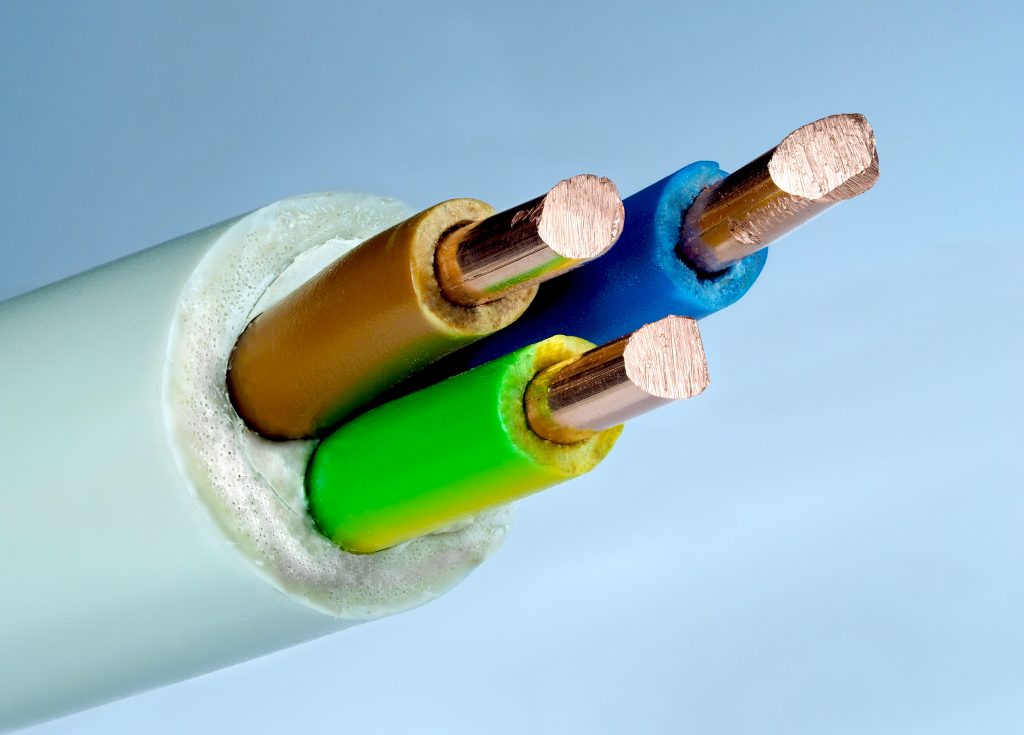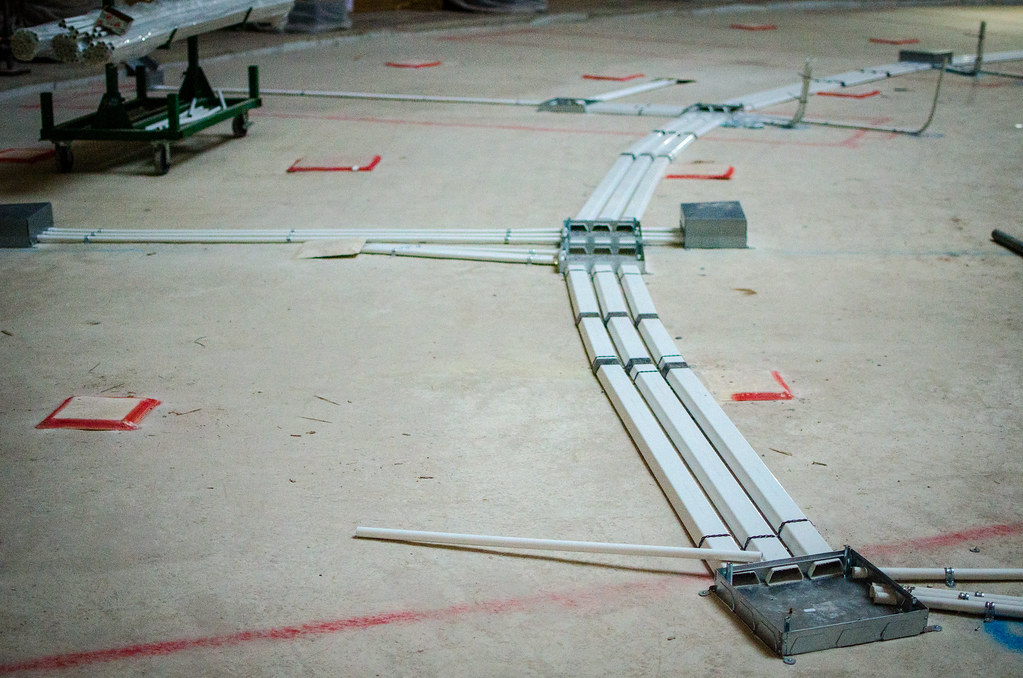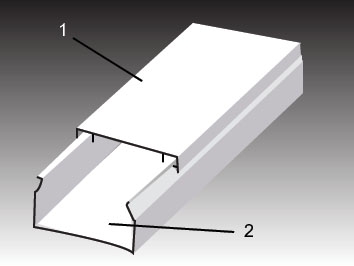
a. How to Choose an Electrical Cable
b. What Are Cable Ducts Used For
Summary:
a. How to Choose an Electrical Cable
– Selecting the cable cross-section for 230 V voltage
– Types of cables
– What happens if the section is too big
– Risks of too small section
– Safety tips
b. What Are Cable Ducts Used For
– What are cable ducts
– Key features of cable ducts
– Uses of the cable duct
– Different types of cable crossings
Introduction
The cable is like a pipe through which water must pass. The greater the amount of water to be transported, the larger the diameter of the pipe must be. The same goes for electricity! The greater the power or intensity, the larger the cross-section of the electric cables will have to be.
Select the cable cross-section for 230 V voltage

The daily voltage is 230 V. Here is an indication of the appropriate wire cross-section according to the intensity or power required:
- 1.5 mm² → 10 A → 2,300 W;
- 2.5 mm² → 16 A → 3,680 W;
- 4 mm² → 25 A → 5,750 W;
- 6 mm² → 32 A → 7,360 W;
- 10 mm² → 40 A → 9,200 W.
For example:
– 1.5 mm² cross-sections are used for lighting;
– those of 2.5 mm² are used for sockets, such as those used for household appliances (washing machine, refrigerator);
– those of 4 and 6 mm² are reserved for power circuits (electric stove, electric heating system, etc.).
Types of cables
Color coding makes electrical wiring easier:
– green/yellow stripes for the ground wire;
– blue for the neutral;
– red-brown, black or gray;
The name of a cable, made up of numbers and letters, indicates, among other things, the admissible voltage, the material of the sheath, the number of wires it contains, the presence or absence of an earth wire (respectively letter G or X).
Risks of too small section
A cable that is too small in diameter will suffer:
It will heat up due to the resistance of the cable, which can cause a fire and loss of tension.
A few safety tips:
– It is more prudent to choose a size that is 50% larger than recommended, to avoid overheating;
– It is better not to use conductors with a cross-section of less than 1 mm²;
– For safety reasons, the electrical wiring must be protected so that no accidental contact is possible.
It is best to run the cables through ducts, embedded in the walls.
If it is not possible to drill a groove, there are protective ducts and skirting boards that can be easily glued to any wall support.
What are cable ducts
Whatever the location, in any electrical installation, electrical cables represent a visual strain and, if not protected, can be damaged. A cable duct is a simple solution to this problem. This post tells you everything here.
Key features of cable ducts
Cable routing takes place during electrical installation in the home, at work or outdoors.
The cable feed-through is made by a cable guard, which by its application provides protection against:
– the risks of cuts;
– crushing in case of floor installation;
– humidity;
– ignition;
– any contact.
Note: in addition to its protective qualities, the cable passage also plays an aesthetic role, especially in the home where these types of accessories are real finished products.
Uses of the cable duct

The protection provided by the cable feed-through differs according to its use.
This means of protection can be used:
– in a professional/industrial environment, to protect cables on the ground from any vehicle passage in a warehouse;
– in the office, to organize electrical cables in a multimedia installation;
– in the context of an exhibition or concert, to organize the passage of cables on the ground;
– outdoors, to protect cables crossing a roadway from road traffic and/or pedestrians;
– in the home, to conceal and protect the electrical installation.
Different types of cable crossings

The type of cable duct varies according to the needs of the installation.
Depending on the configuration, the cable duct can take the form of:
– a baseboard in case of wall installation (cable protection baseboard);
– a threshold bar for floor installation (warning cable passage);
– a flexible spiral hose for organizing multimedia cables (organizer);
– flexible and rigid hoses in the construction frame (electrical ducts);
– a plastic trunking for the passage of cables in a home.
Good to know: the materials of the cable passage are varied and relative to the intended use (hard and rigid plastic, rubber, flexible steel, sheathed steel, etc.).
Do you need help from professionals?
Blue Diamond Electric is based in Suffolk County. They can provide you with complete residential electrical services: Emergency Electrician, Landscape lighting, Electrical Wiring, Home audio installation, Exhaust Fan Installation, Electrical upgrades, and more.
